So, What Is the Core?
Benefits of Working Out Your Core
How to Incorporate Core Strength Into Your Exercise Routine
The Best Core Exercises for Building Strength
Keep in Mind
If you’ve ever sat up in bed or bent over to pick up a heavy bag of groceries, then congratulations — you’ve used your core, aka the muscles in your torso that help stabilize your trunk and provide a strong foundation for your limbs to move and function. Having a strong core goes beyond getting a six-pack. Your abdominal muscles can help prevent lower back pain, improve posture and balance, and allow you to perform at peak levels whether you’re squeezing in a strength class between conference calls, heading to the park for an outdoor walk or run, or taking a Power Zone ride on your Peloton Bike.
“Your core is the center of your body, so almost every single activity, sport, and daily chore requires core strength,” says Peloton instructor Emma Lovewell. “Having a strong core is integral to whole-body health.”
Luckily, some of the best core workouts consist of simple, yet effective, moves you can easily add into your everyday routine. Here, we’ll explain what muscles make up your core (spoiler: it’s not just your abs), the benefits of core exercises, and how to incorporate core strength into your fitness routine. Plus, we’ll share Peloton instructor-approved moves that you can use to create the best core workout for your needs.
So, What Is the Core?
The core refers to a set of muscle groups in your torso, which all work together to protect and stabilize your spine. Beyond that spinal control, each core muscle group has its own unique function. Let’s break it down.
Abdominals
Your abdominals are what you probably instinctually think of when someone mentions your core. This group consists of your rectus abdominus, your internal and external obliques, and your transverse abdominus. Your rectus abdominus is responsible for spinal flexion (think: bending forward to touch your toes), and your obliques help you twist and rotate. The transverse abdominus is the deepest core muscle that wraps around your waist to support the spine.
Erector spinae
The erector spinae run vertically on either side of your spine, and they complement the rectus abdominus by managing spinal extension (like backbends). They also assist with side-to-side movement.
Pelvic floor
Your pelvic floor (yes, that’s a core muscle group!) includes four muscles: coccygeus, iliococcygeus, puborectalis, and pubococcygeus. These core muscles hang out at the bottom of your torso and support your bladder and bowels while also supporting your spine.
Diaphragm
And finally, your diaphragm sits at the base of your lungs. Breathing into your diaphragm (a cue you’ve likely heard from your Peloton instructors) creates the stiffness you need to properly engage your core during strength moves.
Benefits of Working Out Your Core
So, why should you care so much about incorporating the best core workouts into your routine? Your core is the foundation of your entire body, and improving your core strength is an effective way to feel better and stronger in your everyday life. Here are a few of the key benefits of core exercises:
Improve posture: A weak core makes you prone to slumping and slouching, but training your core makes it easier for those spine-supporting muscles to activate while you’re sitting at your desk.
Reduce injury: A strong core provides a better foundation for your limbs to be able to lift heavy while maintaining good form, so you’re less likely to get injured. Think of your core as a corset or a brace; when it’s strong, your core activates to brace for support. On the other hand, a weak core can lead to overcompensating with other muscles, which can quickly lead to injury.
Better exercise performance: Chances are, if you can’t nail the perfect pushup or you’ve plateaued your deadlift weight, it’s because your core isn’t strong enough to support the rest of your body appropriately
Reduce lower back pain: Yup, a weak core can be to blame here, too. If your core is weak, your lower back muscles may overcompensate, which can lead to pain or even worse, injury.
How to Incorporate Core Strength Into Your Exercise Routine
You may be thinking that you’re already stretched thin and don’t have time to add more exercise into your day. But the good news is that core work can be done as part of your pre-exercise warm up two to five times a week.
That’s what Emma likes to do. “You want to activate a muscle before you use it,” she says. “Before a cycling class or strength workout, if you activate your core first, you’re more likely to use it during the workout.” And that activation is the first step to picking up a heavier weight or hitting a new cycling PR.
But if you aren’t able to tack on a core workout before your regular exercise session, don’t worry. Peloton instructor Rebecca Kennedy says there are other sneaky ways to strengthen your midsection throughout the day.
“A small amount of core work could be done daily if done in low intensity, focusing on breathing mechanics and pelvic floor engagement,” she says. “Taking a breathing meditation class daily immediately engages your core and sets proper alignment for your day. Pilates, warmups, or stretches are other incredible options. Even ten minutes would be great.”
So even if you don’t feel like you have a ton of time during the day, try adding breathwork to your morning or evening routine and seeing how that consistent core work improves your workouts.
The Best Core Exercises for Building Strength
Let’s face it, there’s always a new, trendy core workout or overly complicated abs exercise going viral on the Internet. Some of the best core exercises you can do are simple moves that focus more on stability and anti-rotation than twisting, crouching, or crawling. In fact, these nine Peloton instructor-approved core exercises are so simple, there’s not even any equipment required!
Bird Dogs
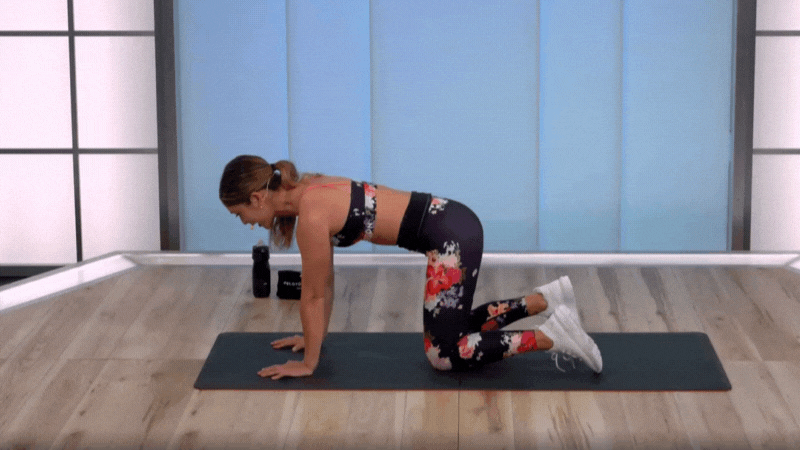
This core exercise may look simple, but it’s a foundational move for your core. The bird dog teaches you to maintain a neutral spine, while also improving core stability as you fight to maintain balance while extending your arms and legs
Begin on all fours in a table-top position with shoulders stacked over wrists and hips stacked over knees. Brace the core, exhale, then lift one arm off the ground and hold it forward while lifting your opposite leg and holding it backward. Hold for a few seconds, pretending that someone is pulling your arm forward as you try to stamp your heel on the wall behind you. Inhale as you return to table-top position. Repeat with the other arm and leg.
Supine Bridges

The bridge is a go-to core exercise because it helps stabilize your posterior chain (aka the muscles alongside the back of your body), which can help reduce any pesky lower back pain.
Lie on your back with your feet flat on the floor, knees in line with your ankles and your arms by your sides. Exhale and slowly raise your hips off the ground, lifting one vertebrae at a time away from the mat. Squeeze your glutes at the top and hold for a few seconds. Inhale as you gradually lower your hips to the floor. Repeat.
Planks
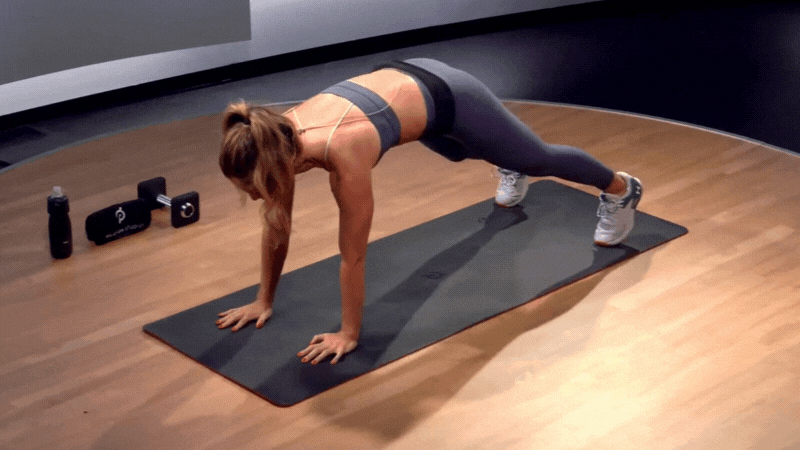
Planks are so simple and straightforward, you can do this bodyweight core exercise anywhere. Plus, a plank strengthens your entire body, not just your core.
There are a few different plank variations that you can play with to make it the best core exercise for your needs. Start in a high plank position in which you’re balancing on your palms and the balls of your feet. Your shoulders are stacked over wrists, legs are long, and hips are in line with shoulders (not piked up toward the ceiling or sagging toward the mat). You can modify this position by dropping your knees to the floor to create a diagonal line from shoulders to knee. If you experience wrist pain, you an modify this to a forearm plank, in which your elbows are under your shoulders and forearms rest on the mat.
Once you’re able to comfortably hold a high plank for 30 seconds, try different plank variations, such as hip dips, plank jacks or moving to your hands or elbows.
Hollow Body Hold
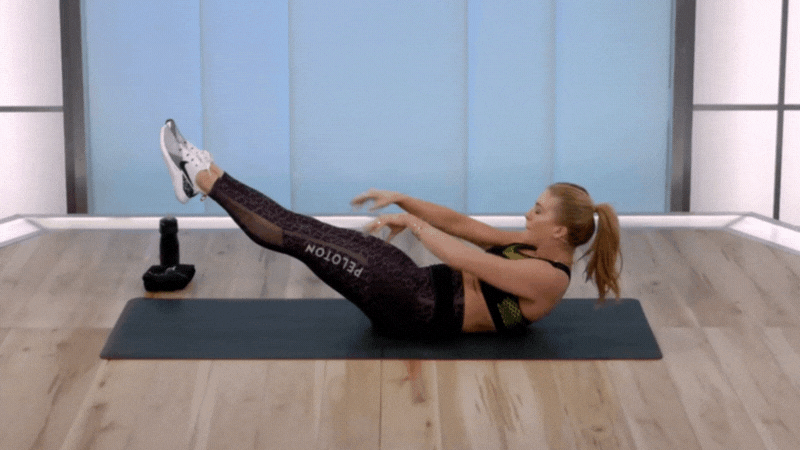
“My favorite bodyweight core move would have to be a hollow hold,” says Emma. That’s probably because when done correctly, this core exercise teaches your body to not arch your lower back, which can cause all sorts of back pain. Plus, this isometric hold builds endurance, as your muscles are engaged for long periods of time.
Start this killer core exercise by lying flat on your back with your legs in table-top position and pelvis slightly tilted up to that the small of your back is pressed into the mat (this is crucial to maintain through the move because having your low back connected to the ground keeps your core engaged). Extend both legs long and stabilize to keep your low back on the ground; you may need to raise your legs slightly. Finally, raise your arms overhead, aiming to get your biceps in line with your ears. “Hold that hollowed out position for 30 seconds for an intense burn!” says Emma.
Teaser

If you’re a Pilates fan, you’ve likely encountered the teaser before. Aside from core strength, the teaser is one of the best core workouts you can do because it also requires flexibility and balance.
Start on your back with your legs straight out in front of you. Exhale and raise your head and shoulders as you extend your legs to 45 degrees, keeping legs as straight as possible. Using your core to keep your legs extended, reach your arms so they’re parallel to your legs. Then roll back down as you lower your legs to the floor.
Bicycle Crunch

“Another great core workout is the bicycle crunch,” says Emma. This exercise is “like a regular crunch except you reach your elbow to the opposite knee, twisting your midsection to really work on your oblique muscles. I like doing these to the beat of the music, switching up the tempo, to keep it interesting!”
To do a bicycle crunch, lie flat on your back with legs long and hands behind your head. Exhale and curl your shoulders and head off the floor; simultaneously, bring your left knee in toward your chest while you rotate your right elbow to meet it. Hold this crunch for a second as you inhale, then on another exhale, switch sides. Continue alternating.
High Plank Taps
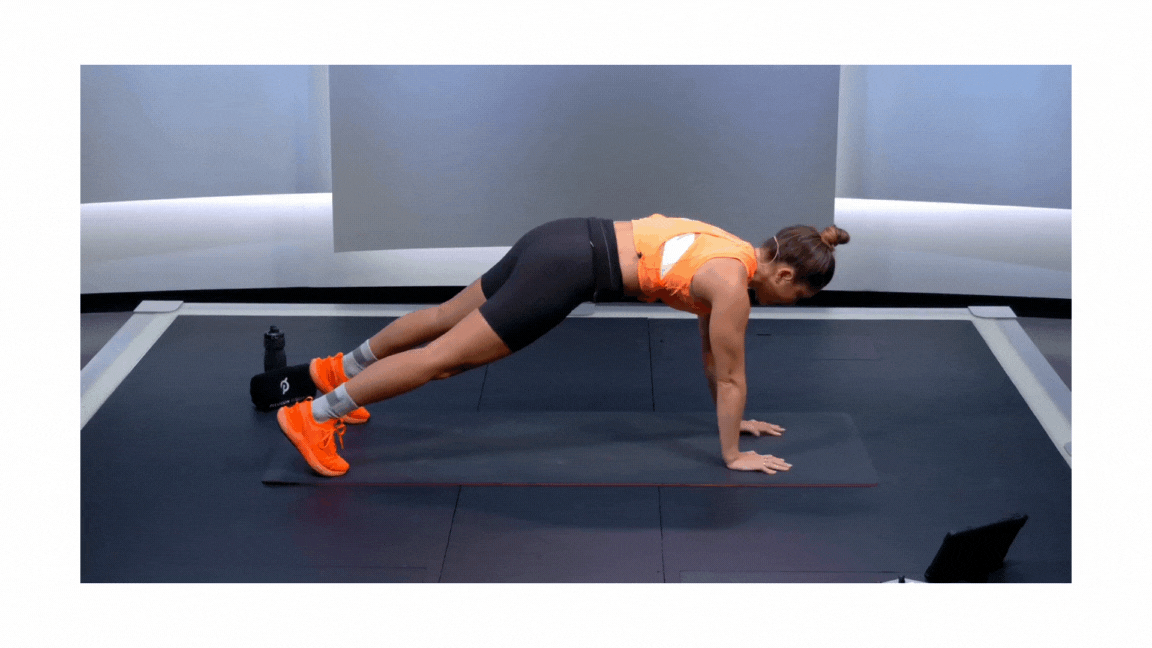
You’re working core stabilizers, abdominals, and transverse abdominals when you try high plank taps. Your goal: Complete this move without shifting your hips from side-to-side.
“Start in a high plank with your hands on the floor placed directly beneath your shoulders, arms straight and spine in neutral,” explains Peloton instructor Matty Maggiacomo. “Suck your navel into your spine while you squeeze your glutes and press the creases of the backs of your knees to the ceiling while you press your heels away from you. Once you’ve established your starting position, your will now lift your right hand off the floor while you drive your left knee toward your midline and tap your knee cap with your hand. Return to high plank, now drive your right knee in and tap with your left hand. Alternate and continue for 30 to 60 seconds,” says Matty.
Bear Plank
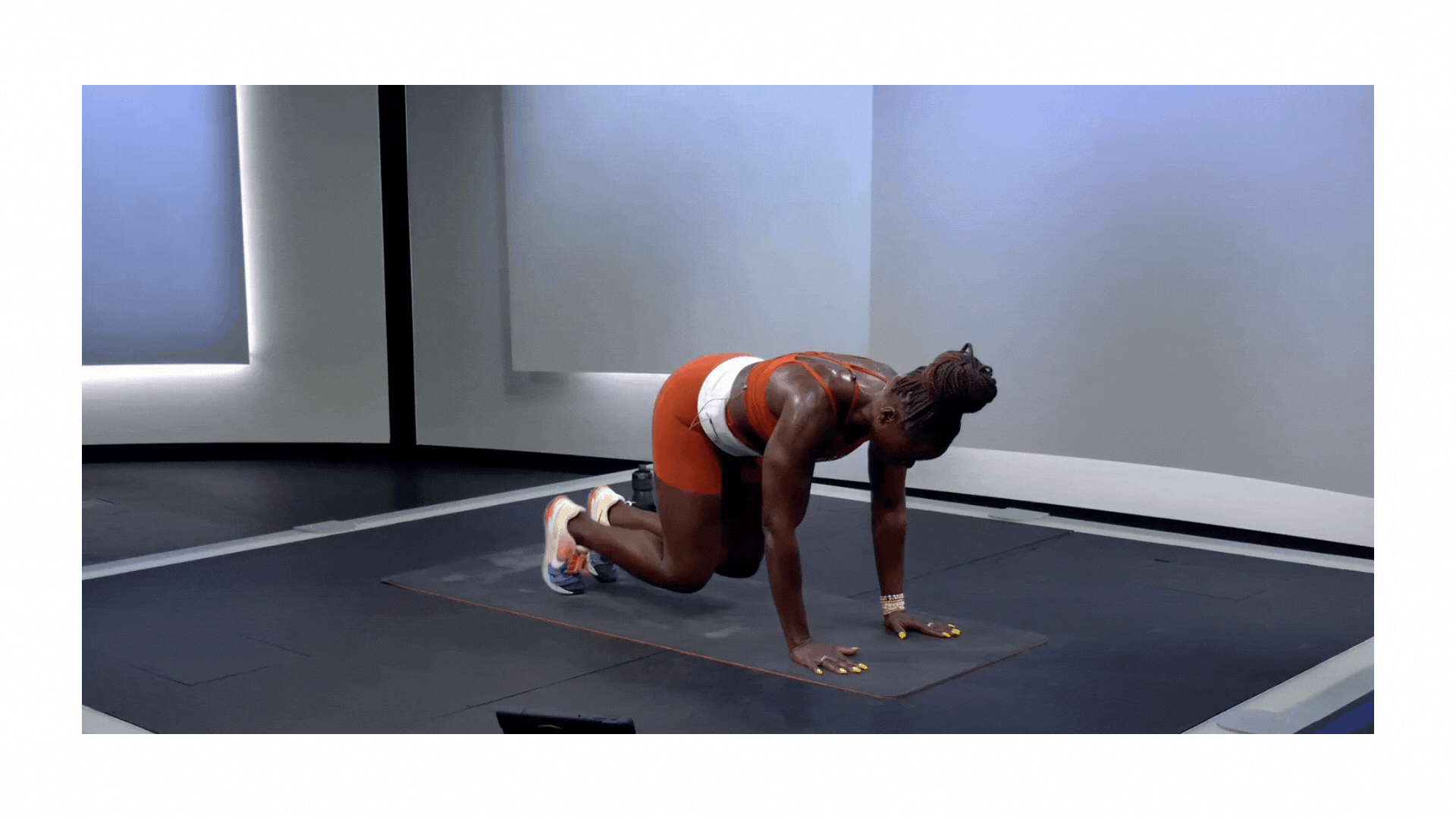
The bear plank hold begins in high plank position as detailed above, but by making a simple switch in foot positioning, you open yourself up to a whole different set of core benefits. Key among them: strengthening your transverse abdominis and oblique muscles, which will improve your spinal flexion and rotation, and challenging your quads and shoulders.
“Step your feet in so that you are holding your knees off the floor directly in line with your hips and bent at 90 degrees,” says Matty. “Hands should remain on the floor, arms straight and in line with your shoulders, and back remains flat and core and quads engaged. Hold for 30 to 60 seconds. You are working abdominals, core stabilizers, and your erector spinae.”
Plank Pike to Tap
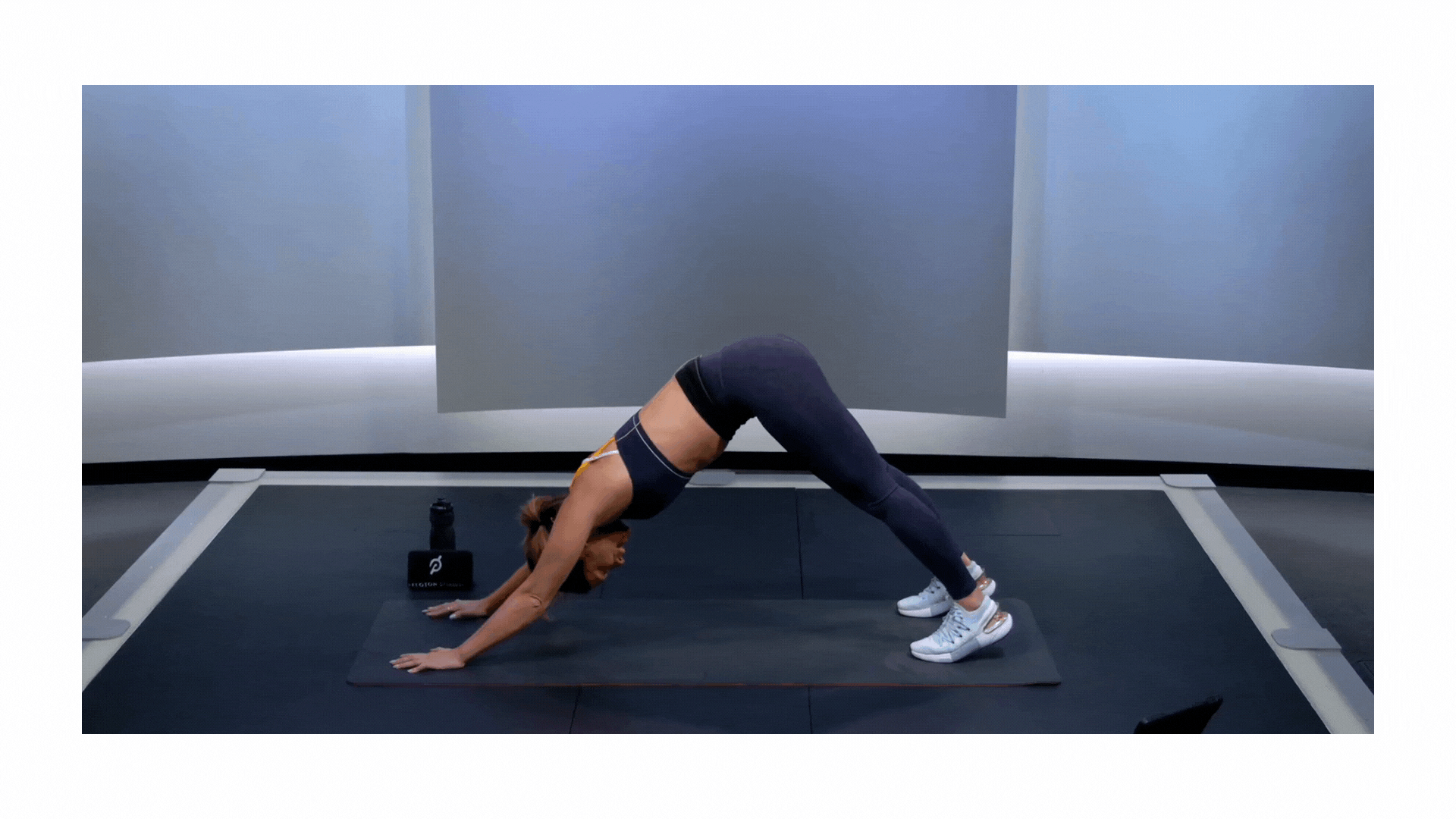
Ready for more? The plank pike to tap and drive also starts in high plank position, but that’s just the beginning of your core journey. This core exercise is especially effective in a warm-up, since the downward dog-like pike adds a hamstring and calf stretch. “This one is a burner and targets your abs as well as your shoulder girdle and even your quads!” says Matty.
“Pike your tailbone to the sky and drop your head in between your biceps (just like in downward dog) and as you do so, reach your right hand to tap your left toe,” he continues. “Return to high plank position and drive your left knee to your right elbow. Return to pike position and reach your left hand to tap your right toe. Return to high plank position and drive your right knee to your left elbow. Alternate sides and continue for 30 to 60 seconds.”
Keep in Mind
Your journey to a strong core has just started, and you’re well on your way to reaping all the benefits of core work. By incorporating these best core workouts into your warm-up or day-to-day movement a few times a week, you’re sure to notice fewer injuries, better posture, and more cycling PRs, among other major upsides.
While you’re adding the best core workouts to your routine, remember to breathe. Yes, it sounds basic, but it’s common for beginners to accidentally holding their breath during challenging core exercises. Instead, focus on exhaling during the push or the difficult part of the move, then inhale as you recover. (For more tips on how to breathe while working out, check out this helpful advice.)
And remember, your core work goes beyond the exercise mat, too. “If you start with good form and proper breathing, everything is a core exercise,” says Rebecca. “Both working out and living your daily life!”
This content is for informational and educational purposes only and does not constitute individualized advice. It is not intended to replace professional medical evaluation, diagnosis, or treatment. Seek the advice of your physician for questions you may have regarding your health or a medical condition. If you are having a medical emergency, call your physician or 911 immediately.
Level up your inbox.
Subscribe for a weekly dose of fitness, plus the latest promos, launches, and events.
By providing your email address, you agree to receive marketing communications from Peloton.
For more about how we use your information, see our Privacy Policy.



